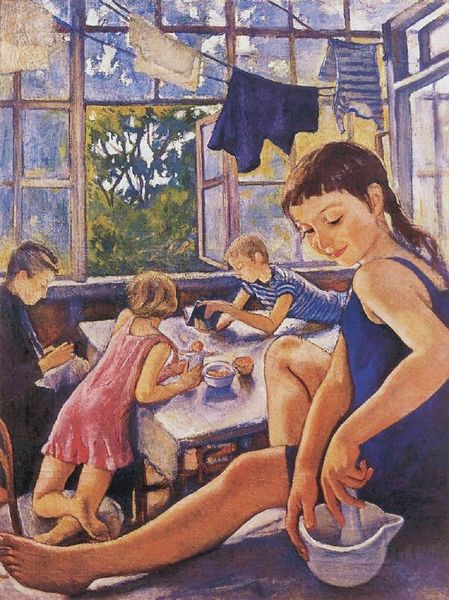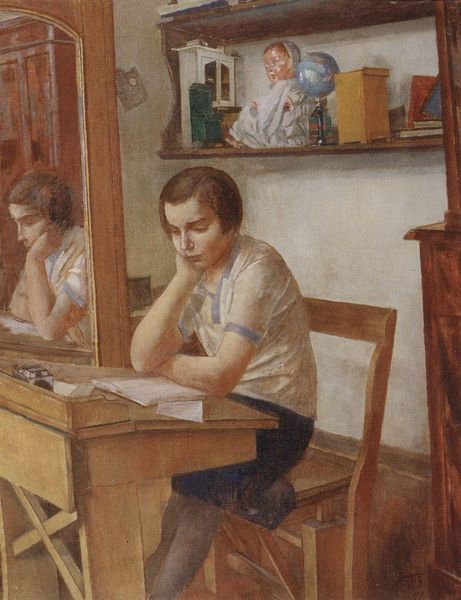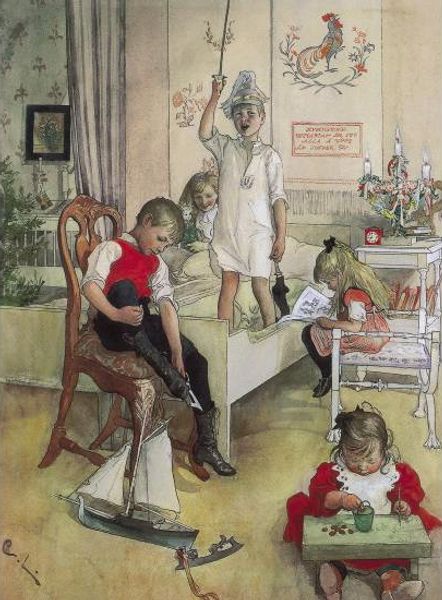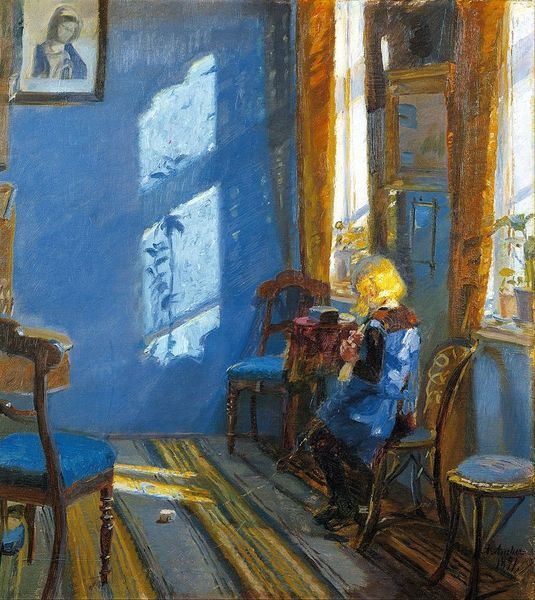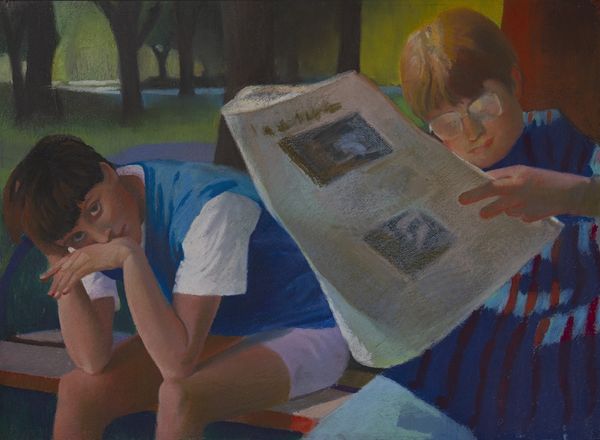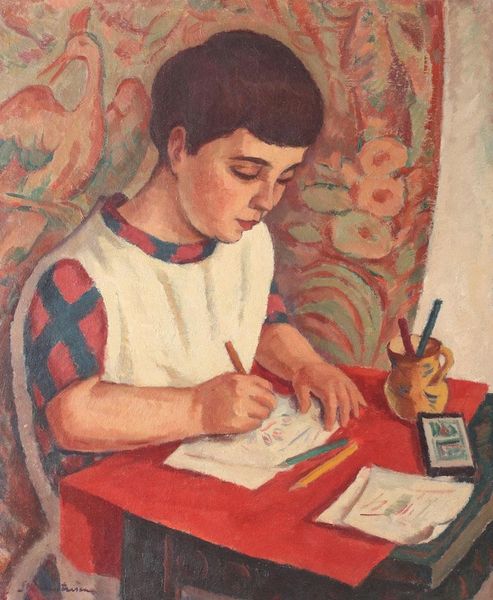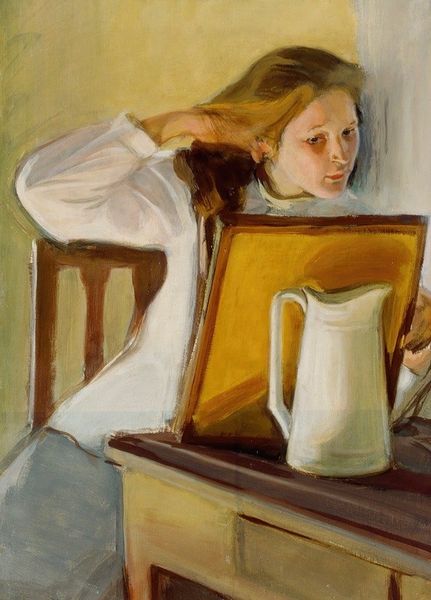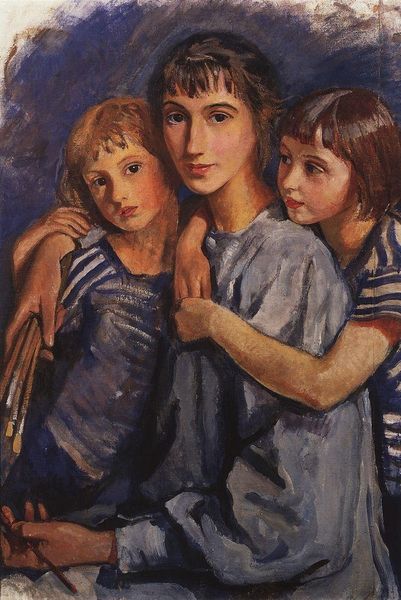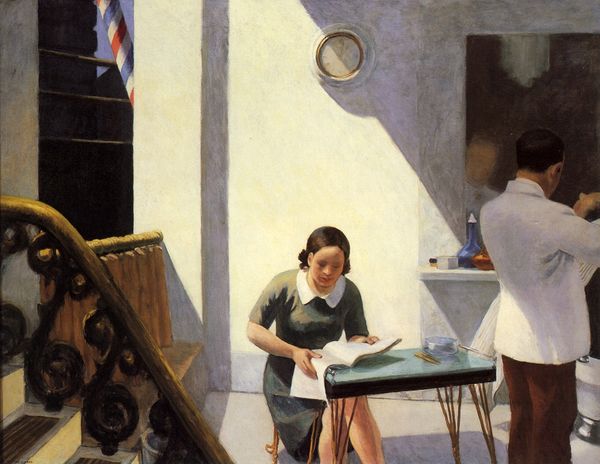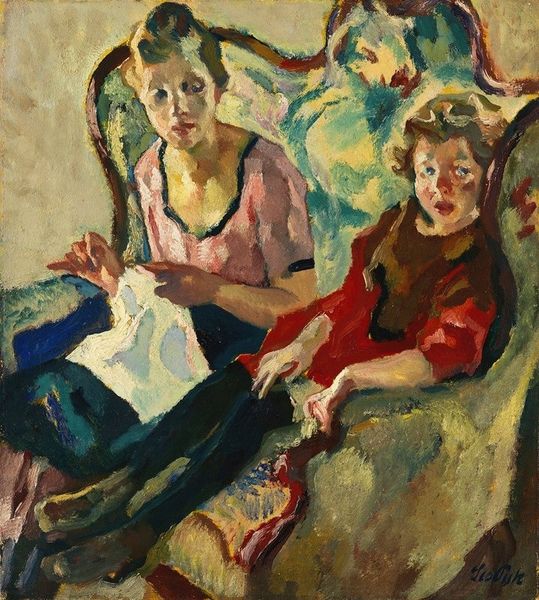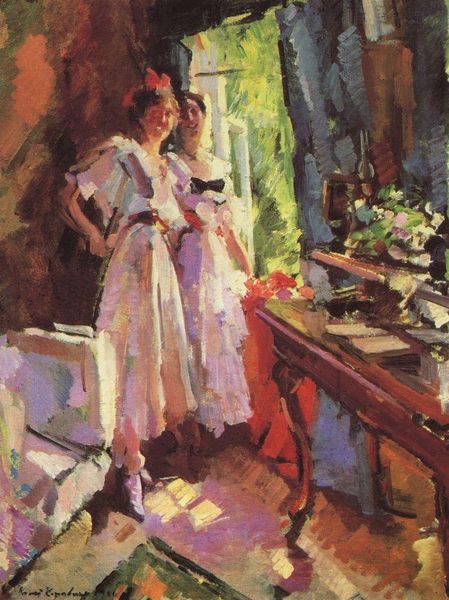
painting, oil-paint
#
portrait
#
painting
#
oil-paint
#
oil painting
#
portrait reference
#
famous-people
#
child
#
genre-painting
#
portrait art
#
realism
Copyright: Public domain US
Curator: This is Zinaida Serebriakova's "Tata and Katia in the mirror", created in 1917 using oil paints. Editor: My first impression is one of intimacy and quiet domesticity, despite the somewhat unsettling mirroring effect. The palette feels muted, calming. Curator: Serebriakova’s work, especially her genre scenes, gives us a glimpse into the material realities of upper-middle-class Russian life before the Revolution. Notice the ornate dressing table, the girls' clothing—sailor stripes being a popular choice for children’s wear at the time—these details speak volumes. The production and consumption of such goods indicate a certain social stratum and economic security. Editor: But the mirroring... it creates such a layered composition. The figures within the mirror – presumably the artist herself and a glimpse into other rooms in the house. It suggests an awareness of multiple perspectives, reflecting perhaps the artist's internal life. The interplay of light and shadow further enhances this sense of depth and complexity. Curator: I see the mirror more as a tool, a technological intervention, if you will. Mirrors, made with specific materials and labor, reflecting not just images but also the means through which identities and social roles are constructed. The presence of a person sweeping in a distant reflected room indicates social class and domestic production that might not always be on view for those of us looking at paintings in museums. Editor: That's a very valid observation! But still, the way she employs color theory…the blues against the warm browns…it creates this wonderful harmonious tension. Also the children. Their expressions seem to capture a certain quiet thoughtfulness that transcends mere social commentary. It draws the viewer in for sure. Curator: True, it humanizes, even though the image and figures represent privilege and class difference, which depended on production hierarchies, and a system of value judgments that relegated manual labor to the lower classes. But also this mirror may serve as a portal for how Serebriakova herself engaged with her artistic output in real terms, thinking about composition, and production! Editor: I hadn't considered the perspective of the means through which the composition was crafted! It enriches my reading of the work and prompts me to question and understand better some assumptions I had about the children. Thank you. Curator: And likewise, your points about visual composition inspire a consideration for aspects of viewing and contemplation of art that material conditions on their own might not afford.
Comments
No comments
Be the first to comment and join the conversation on the ultimate creative platform.
